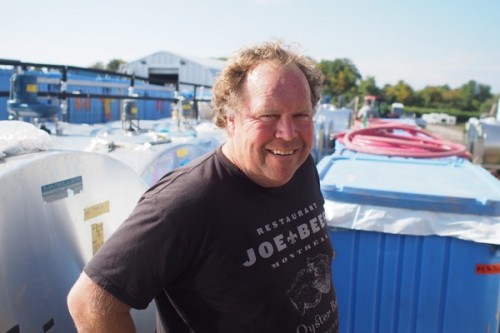
I’m back from Canada, and already in South Africa. But I’m thinking back to those few days I spent at Norman Hardie, and all that I saw, absorbed and learned. It was a lovely time. A privilege to witness.
I followed Norm around like a puppy, watching what he was doing (and what he wasn’t doing). A lot of the time, it was what he wasn’t doing that was most interesting: in order to allow his team to grow, he let them get on with jobs where there was a chance they might make mistakes of the sort that weren’t so serious that wine quality would be compromised, but important enough that they’d learn from their mistakes.
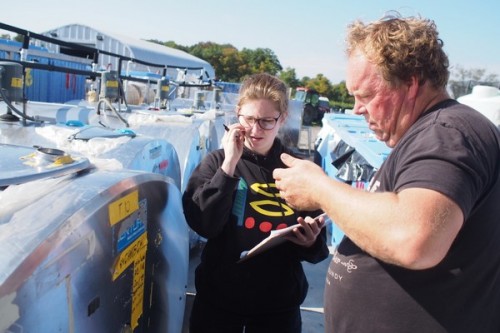
I got the impression that despite the busy-ness of vintage, Norm knew exactly what was going on, and wasn’t missing anything. With a lot of small ferments, that requires quite a lot of mental space. It’s like conducting an orchestra. There are just so many different elements that have to come together and perform at a high level, for the overall whole to be excellent. Someone needs to direct this.
I also realized that the majority of winemaking is manual labour: shifting things around, keeping track of logistics, making room for barrels and fermenting bins, ensuring there’s enough tank space, pumping stuff, lifting stuff, and cleaning up. Things have to happen at the right time, and getting the timing or logistics wrong is a simple way to lose quality.
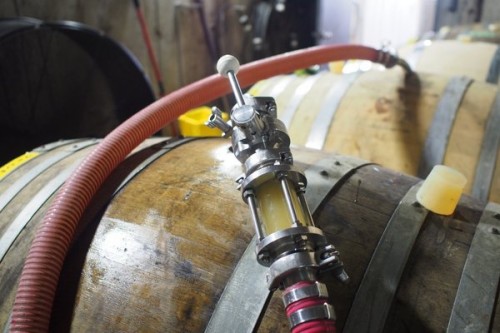
It was great to get to know Norm a bit more. His story is an interesting one.
Norman Hardie came to wine after several years working for Four Seasons, both as a sommelier and also a wine director, involved in purchasing wines for the core list in all their properties. The journey to setting out on his own in Prince Edward County was quite a long one.
Norm gained experienced making wine, and Pinot Noir in particular, in several spots around the world. Notably, he spent a couple of vintages working with Dean Shaw in Central Otago at the Central Otago Wine Company, where many of the region’s wines are made. His first vintage here was in 2001, and he came back again in 2002. The second time round, Dean’s wife was having a baby, and there were some complications, so Norm arrived, Dean handed him the keys to the winery, and for the next 10 days Norm was in charge of a 500 ton contract winery. That’s the way to learn: it’s also interesting that Dean clearly trusted Norm with the job after working with him the previous year.
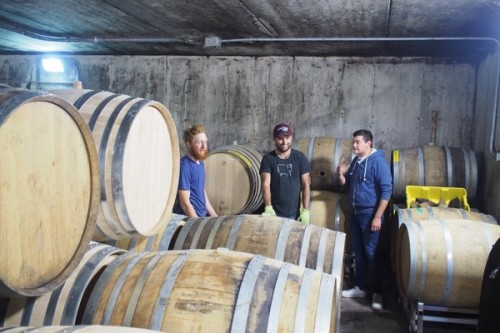
Another important experience for Norm was working vintage at Domaine de la Vougeraie with Pascal Marchand. This was the first vintage for Vougeraie, which is a super-domaine developed by Boisset from the amalgamation of several domains that they’d bought in the 1990s. This was 1998, and just before harvest the new winery simply consisted of an empty space. One by one the fermenting vessels and large barrels arrived from the other domaines, some of these items dating back to the turn of the century, including an old screw press that Hudelot Noellat had used for making cassis. The grapes started arriving. Work was so intense that for three days they didn’t even eat. It must have been a great experience working with fruit from a total of 34 hectares (sizeable by Burgundy standards), including some of the region’s top vineyards. He was later to repeat the Burgundy experience working with Nicolas Potel.
Norm also has extensive experience in California, where he did vintage Jim Clenenden and Bob Lindqvist at Au Bon Climat/Qupé. He followed this up by doing the Pinot Noirs at Au Bon Climat the following year.
In 2004 he set out on his own. It was the soils of the County that really drew him: clay and limestone. Yes, there were viticultural challenges, but this didn’t put him off. In some ways, the worst risks are offset by his decision also to make wines using Niagara fruit. There are some seriously good vineyard sites in Niagara, and it’s always interesting to compare Norm’s County and Niagara wines. Often I have a preference for the former, but there are some lovely surprises from the latter, too.
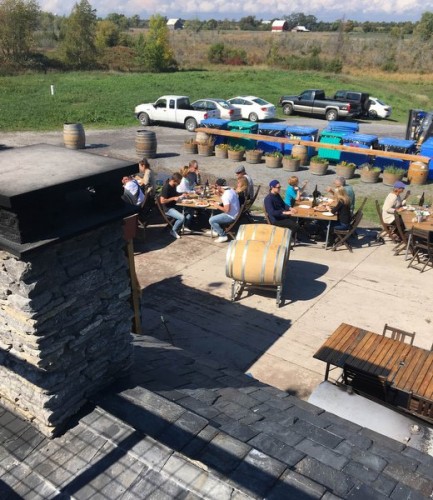
The project here has grown incrementally, and will continue to grow. One of the inspired ideas was building the pizza oven. Initially, Norm swore he wouldn’t do food. But the wood fired pizza oven is now a famous draw, and supports what goes on at the winery beautifully. It’s cleverly managed: larger groups have to be there and ordering before 12, which means that the coast is clear for most people who arrive a bit later. No coffee is served, which helps turn tables. On a summer Saturday, they’ll sell around 300 pizzas. If anyone is in the hospitality business, Norm will often spot them and comp them, which creates a lot of good will. He’s also great at engaging with customers and making them feel special, even at harvest time when there’s a lot on his mind.
I’m grateful for this chance to see under the surface, witnessing the inside perspective of a busy winery during vintage. And I’m looking forward, in a few years’ time, to seeing how the 2016 wines turn out.
1 Comment on Vintage at Norman Hardie (4)
Welcome to Elgin Jamie, we are excited about your participation in our first Chardonnay Colloquium this weekend where we will be featuring one of Norman’s Chardonnay’s the 2013 Niagara, courtesy of Norman when I met him in Ontario earlier this year. Andrew